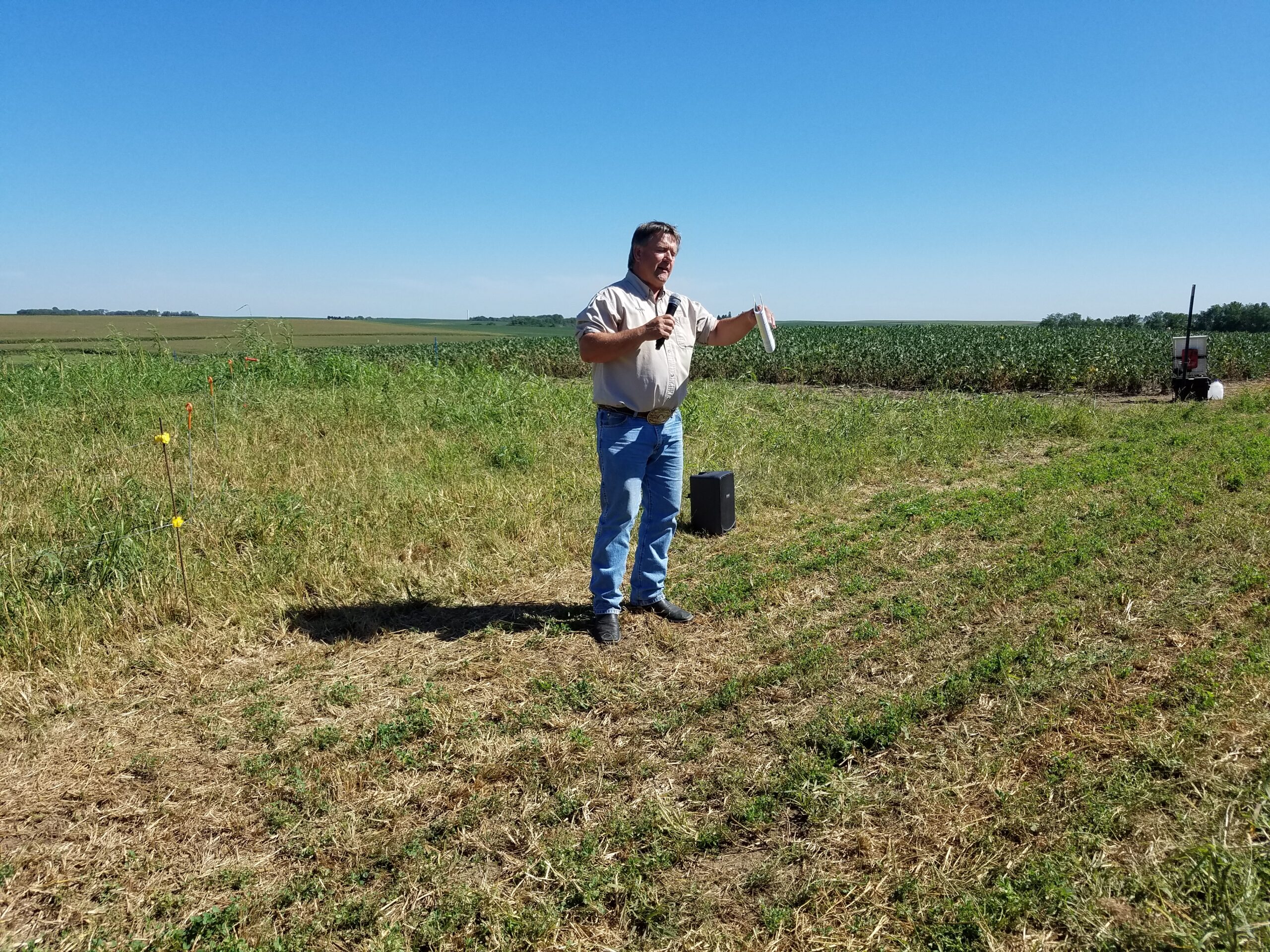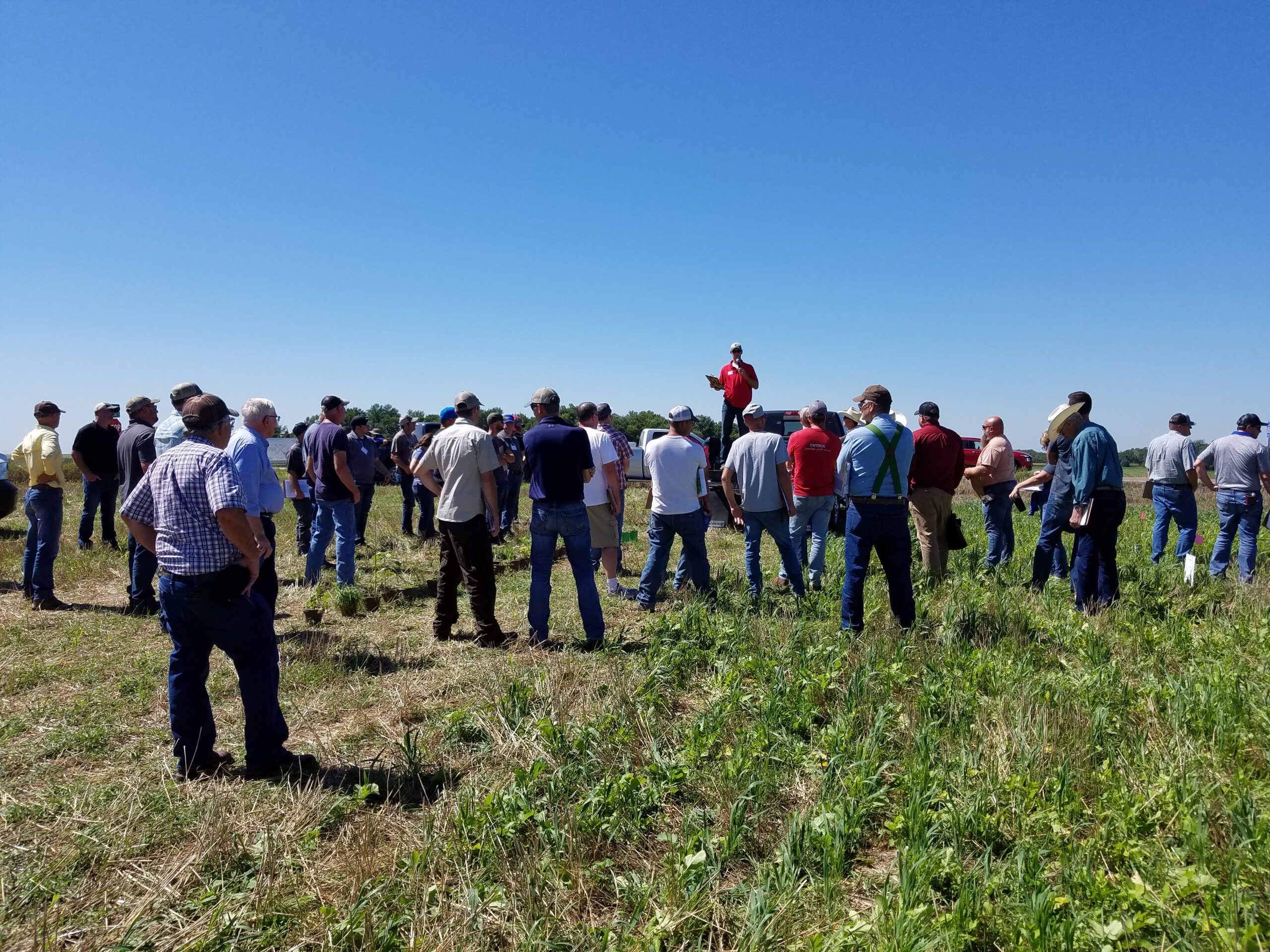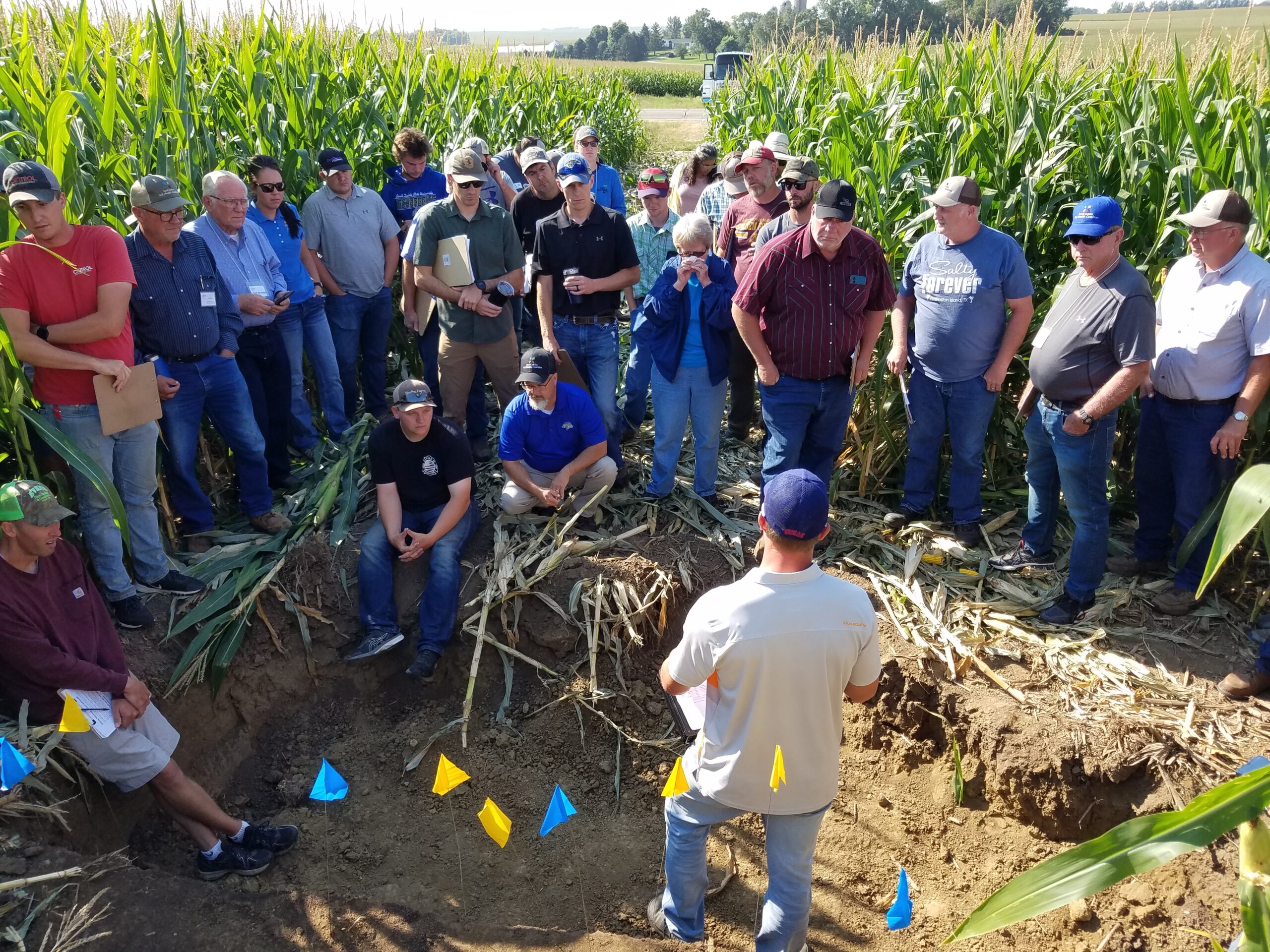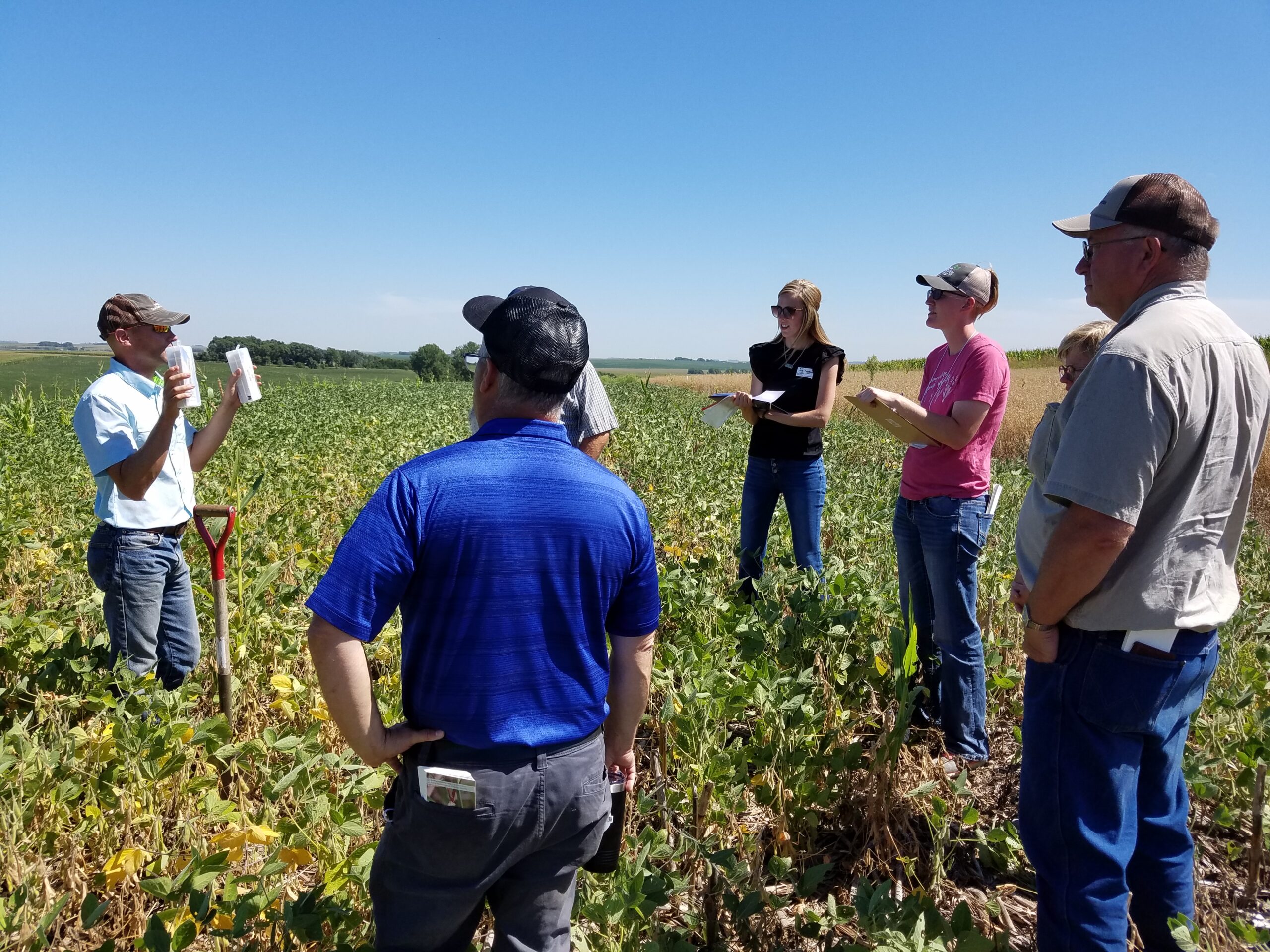
North Dakota State University Extension Rangeland Management Specialist Kevin Sedivec leads a discussion at the 2022 Soil Health School. SD Soil Health Coalition photo.
By Stan Wise
Healthy pastures are about more than just grass.
That’s a fact that North Dakota State University Extension Rangeland Management Specialist Kevin Sedivec wants participants in the upcoming Soil Health School, Aug. 28-30 near Garretson, SD, to understand.
Sedivec, who has been an instructor at the annual school for five years, said “the misconception is that flowering plants on rangelands, cows don’t eat them and so they’re viewed as a weed, and so farmers will spray them out. The fallacy on that is cows do eat flowering plants. It’s part of their daily diet.”
He said research shows that herbaceous flowering plants, or forbs, make up about 25 percent of a cow’s diet. That’s why he will lead a new segment focused on the nutritional value of various native rangeland forbs at this year’s Soil Health School.
“Some of these forbs are actually higher in mineral content than the grasses are. They’re also higher in nutritional value than the grasses are,” Sedivec said.

Field tours are an important part of the Soil Health School experience. SD Soil Health Coalition photo.
This is especially true in dry conditions.
“Grasses tend to get really low in nutritional quality as they cure out, but the forbs, and particularly the shrubs, like western snowberry, retain their quality better than grasses during dry years,” he said. “So, the resiliency is a little better, and I think it’s because of the root architecture that occurs belowground. They can get deeper down in the soil profile where there’s water. So, the beauty of the diversity of the mix, whether it’s the cover crop or whether it’s rangelands, is it creates resiliency. And in reality, you could actually reduce your mineral cost.”
Sedivec said that having beneficial forbs integrated in rangelands “would provide a positive response to the livestock diet while adding a positive response to the environment in terms of creating habitat for pollinator species.”
The diversity helps improve soil health, as well. “You have this diversity that increases the soil health component because you have a totally different microbial population belowground that feeds on that different architecture of roots that forbs provide,” Sedivec said. “If you have a nice mix with your grasses, you should actually increase the overall population of microbes.”

Soil pits offer Soil Health School participants an opportunity to learn how land management affects soil health. SD Soil Health Coalition photo.
Soil Health School
Participants at the 2023 Soil Health School can expect to learn about many subjects in addition to the nutritional value of rangeland forbs. This educational opportunity offers a mix of classroom sessions, which will be held at the Holiday Inn Express and Suites in Brandon, SD, and field exercises, which will be hosted Aug. 28-30 on the farms of Anthony Bly and Bruce Carlson near Garretson, SD. The basics of soil science and important soil health concepts will be covered in classroom sessions. Various cash crop and cover crop rotations will be demonstrated in the working fields of the host farms, and cover crop grazing exercises and information will focus on both cattle and sheep.
Attendees will also have the opportunity to pose their questions to soil health experts and network closely with experienced producers and professionals who can help them improve the sustainability of their operations. Class size is limited to 30 people so that participants can have more contact with instructors and Soil Dakota Soil Health Coalition board members.
“Soil heath is a crucial factor in crop yields, plant health, and overall productivity of the farm,” SDSHC Chairman Shawn Freeland said. “The Soil Health School provides practical knowledge and tools that can improve soil health, connect producers with experts and peers, and keep farmers and ranchers up to date with the latest soil health trends and best practices.”
“I think the South Dakota Soil Health School is one of the best schools that I’ve seen done in the Northern Plains,” Sedivec said. He said people should register for the school “because what they provide is valuable in terms of actually creating not only healthy soil, but a healthy environment that’s conservation friendly.”
The cost to attend Soil Health School is $150 for the first person from an operation and $75 for each additional person from that operation. A block of rooms has been reserved for a nightly rate of $100 at the Holiday Inn Express and Suites in Brandon, SD. Participants can learn more and register at www.sdsoilhealthcoalition.org.
Download a printer-friendly version of this article here.

Soil Health School participants learn to conduct various field tests. SD Soil Health Coalition photo.
0 Comments